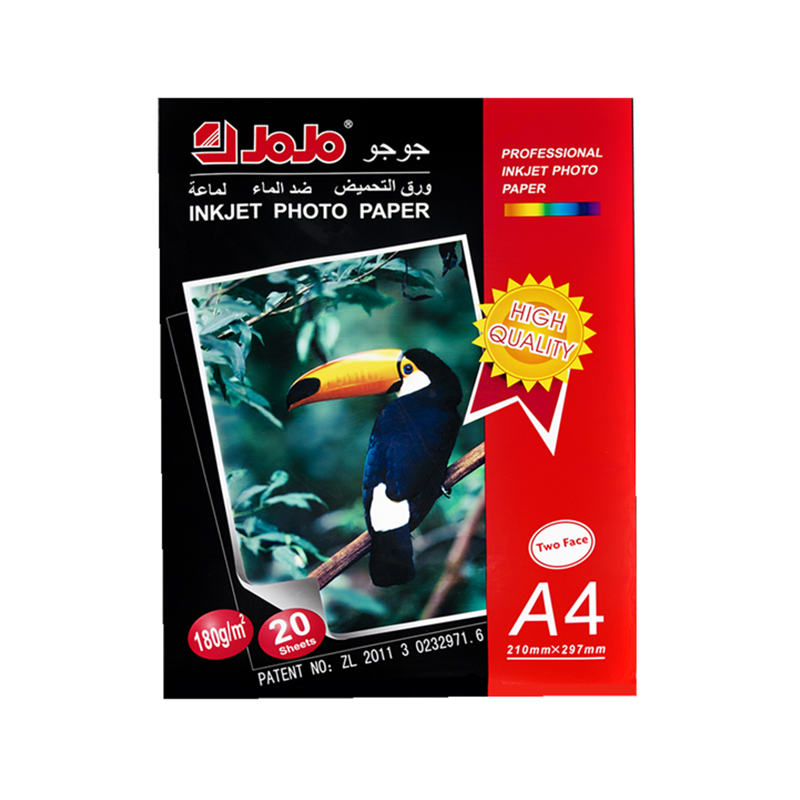If you need any help, please feel free to contact us
Cotton Vs. Polyester: Fabric Compatibility In Heat Transfers
When working with heat transfer applications, one of the more critical considerations is fabric compatibility. Cotton and polyester are two of the more widely used materials in the textile industry, and each responds differently to various types of heat transfer techniques and media. Whether using multi thermal transfer paper, inkjet thermal transfer paper, or other printing supplies such as glossy paper waterproof sheets, understanding the behavior of the fabric is key to achieving consistent and reliable results.

Characteristics of Cotton in Heat Transfers
Cotton is a natural fiber known for its softness, breathability, and absorbent qualities. It tends to hold ink well, particularly when used with heat transfer paper designed for inkjet printing. Inkjet thermal transfer paper is typically compatible with cotton because the fiber allows the ink to soak in slightly, creating a durable bond when heat is applied. The application process is relatively straightforward, requiring the right pressure and temperature combination to ensure the ink adheres correctly.
However, cotton’s natural absorbency can sometimes result in a less vibrant outcome compared to synthetic fabrics, especially if the transfer paper is not specifically engineered for cotton surfaces. For this reason, it is essential to match the paper type and printer settings carefully. Multi thermal transfer paper designed for cotton usually includes a coating that facilitates better color retention and wash resistance.
Polyester’s Response to Heat Transfer
Polyester, a synthetic fiber, behaves very differently from cotton under heat. It has a smooth surface and low absorbency, which can make ink adhesion more challenging. However, polyester reacts well to sublimation printing and specific thermal transfer techniques that operate at higher temperatures. When using multi thermal transfer paper on polyester, it is important to ensure that the transfer paper is compatible with synthetic fibers and that it can handle the higher heat without distortion.
Inkjet thermal transfer paper for polyester must be selected with care. Not all inkjet papers are designed to withstand the smooth, non-absorbent nature of polyester. The paper must have a heat-activated adhesive that bonds well to the fabric surface without bleeding or ghosting. Using the wrong type of paper may advance to incomplete transfers, weak color definition, or rapid fading after laundering.
The Role of Transfer Paper Selection
Choosing the right transfer paper is essential in both cotton and polyester applications. Multi thermal transfer paper is often marketed for versatility, able to work with a range of fabric types. However, true multi-purpose performance depends heavily on printer compatibility, ink type, and heat press calibration.
Inkjet thermal transfer paper, specifically formulated for inkjet printers, is ideal when dealing with complex designs or high-resolution images. On cotton, it often produces soft-feel transfers with reasonable durability. On polyester, the success of inkjet thermal transfer paper depends on whether the product is engineered to overcome the low-absorption surface. In cases where polyester is the preferred substrate, sublimation transfer paper may be a better fit.
Glossy paper waterproof variants are another option sometimes used in decorative textile printing or label transfer. These types of paper provide water resistance and a bright surface finish, which can enhance the appearance of printed images. However, their application in direct fabric transfer is more limited. Glossy paper waterproof sheets are more commonly used for hard surface applications or for stickers and decals. When used on fabric, especially polyester, they require special adhesive layers and careful heat management to avoid curling or cracking.
Application Techniques and Final Considerations
When applying heat transfers, several variables must be considered: temperature, pressure, time, and peeling method. Cotton generally allows for higher pressure but slightly lower temperatures than polyester. Polyester, being sensitive to heat, can scorch if the temperature is too high, which can also cause discoloration or fabric shrinkage.
It is recommended to pre-test every combination of fabric and paper, especially when using new ink formulas or printer models. Not all inkjet thermal transfer papers or multi thermal transfer paper types behave the same way, even if labeled similarly. Environmental conditions like humidity can also affect paper performance and final transfer quality.
In summary, both cotton and polyester can be suitable substrates for heat transfer printing, but each requires tailored methods and materials. Multi thermal transfer paper offers versatility but must be matched appropriately to the fabric type. Inkjet thermal transfer paper is effective with the right ink and temperature setup, especially for cotton. Glossy paper waterproof options offer durability for select applications, but are not always ideal for direct textile transfer. By understanding the interaction between paper, ink, and fabric, users can achieve consistent results across a range of print projects.

 English
English Español
Español 中文简体
中文简体 Português
Português

